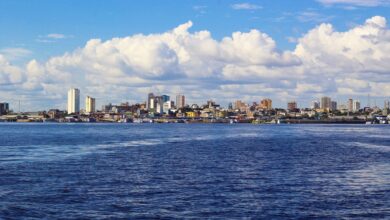Scientists Discover Microplastic in Blood, Meat and Milk of Farm Animals
A Study Carried Out in the Netherlands Revealed the Presence of Plastic Particles in Cows and Pigs. This was Verified in Both Fresh and Processed Foods. Find out What the Scope of what was Discovered by this Investigation May Be.

Photo: Unsplash
LatinAmerican Post | Joshua Radesca
Listen to this article
Leer en español: Científicos descubren microplástico en sangre, carne y leche de animales de granja
Plastic is a material that humanity has used for a long time and in different fields. Almost in any space in the world, to a greater or lesser extent, there is a presence of this component.
The overproduction of plastic and its inadequate disposal is one of the most important environmental problems of today. A report by the World Wide Fund for Nature in conjunction with the University of Newcastle, Australia, indicates that since 2000, globally, as much plastic has been manufactured as that produced in the sum of the previous years.
The same report explains that “more than 75 percent of all that material produced today becomes waste. And a good part of this waste is poorly managed.” Following this idea, it indicates that “87 percent is dumped into nature, which generates plastic pollution. For example, by 2025, the oceans will have 1 metric ton of plastic for every 3 metric tons of fish.”
The great diffusion of plastic in our era has not only caused pollution problems in various areas of the planet, such as seas and farmland. It is known that microplastics, which are particles smaller than 5 mm millimeter, are usually ingested by marine beings and people. Now, a study by the Free University of Amsterdam (Vrije Universiteit in Dutch), in partnership with the Plastic Soup Foundation, has discovered the presence of this material in the blood, meat and milk of cows and pigs.
It is believed that the cause of this could be in the diet, since plastic was detected in the granulated and crushed food of these animals. Other usual routes of exposure, such as water or air, are also not considered.
The plastic particles enter the bloodstream of animals and can be deposited in the organs or even reach the breast milk. In this way, the material could be consumed by people.
The danger of microplastic
Microplastics cause quite a bit of concern in the scientific community because there are still no conclusive data on its impact on human health. Some studies suggest that it can cause cell damage or influence the appearance of diseases.
Microplastic comes from various sources, such as the cosmetic and textile industry, fishing items, plastic waste from everyday use, among others. Research from the Free University of Amsterdam highlights how plastic waste moves through the food chain.
"We already know that hundreds of animals also have microplastics in their bodies, but in cows and pigs, it hadn't been discovered before," said Heather Leslie, co-author of the study, who also assured that "if we want to assess the risks, we must first know which is the actual exposure and how toxic it is. If we are above values that are still safe and responsible, then we have to do something about it."
We recommend you read: Is just being a vegetarian helping the planet? Diet changes to help the environment
The study data
To conduct the study, samples were collected from farms and grocery stores. Considerable concentrations of PVC, polyethylene and styrene polymers were achieved in the animals studied. Other data provided by the investigation is that at least one type of plastic was detectable in 100% of the blood samples from cows and pigs. Microplastics were also found in 72% of milk samples of any kind. In the case of meat, the presence of this material was 75%.
“This study raises serious concerns about the contamination of our food chain with microplastics. It is also clear that farmers are not responsible for this. It appears that at least some of the old food products, including those in supermarkets, are being turned into cattle feed, packaging and all. This is not only detrimental to animal welfare, but perhaps also to ourselves. Most likely, almost all steaks and hamburgers contain small pieces of plastic,” said Plastic Soup Foundation director Maria Westerbos.
This is a pilot study that took a small sample, but which gives rise to more extensive and in-depth research that provides a greater understanding of the consumption of microplastics, its presence in animals and people, and the impact on health. from both.




